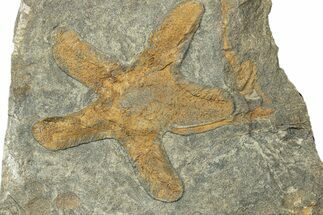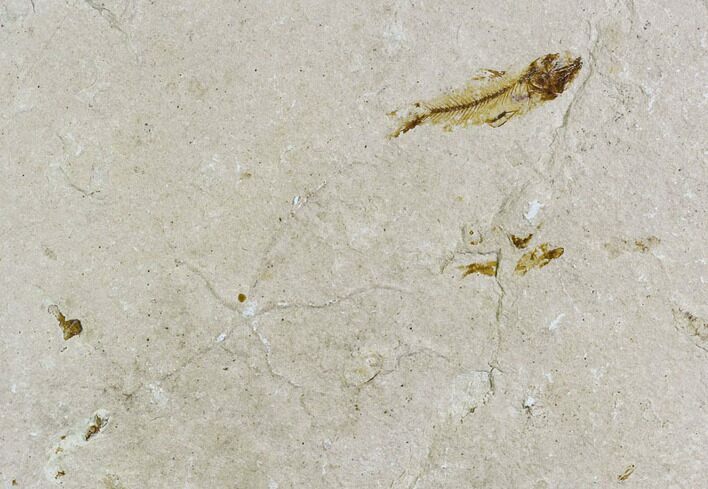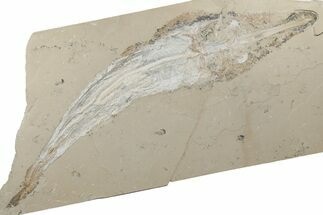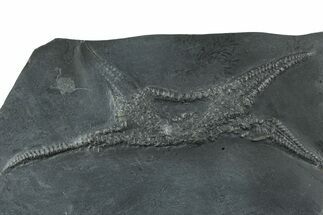This Specimen has been sold.
2.1" Cretaceous Brittle Star (Geocoma) With Fish - Lebanon
This is a 2.1" wide fossil brittle star (Geocoma libanotica) from the Upper Cretaceous deposits near Hakel, Lebanon. This plate also features a "friend"; the remains of a small fish are present and easily visible.
Geocoma is an extinct genus of Ophiuroidea, or brittle stars. Brittle stars have a distinct central disc and five radiating, slender, highly flexible arms. The arms are solid, unlike hollow arms on starfish. Also unlike starfish, they move by flexing their arms rather than through the movement of tube feet on the arms. They feed on small particles of food they found along the sea floor. The Geocoma genus is known from both Jurassic and Cretaceous-aged deposits, in particular the Solnhofen Limestone in Germany and the Middle Cretaceous Lebanese deposits.
The discovery of amazingly preserved marine fossils near Hakel, Lebanon dates back many centuries. In fact, they were first mentioned in writing by Herodotus, over 450 years before the birth of Christ. The first scientific work on these localities began in the 1800s: these deposits have been meticulously quarried by several Lebanese families for over a century. We purchase our specimens directly from one of these families.
These deposits represent a warm, shallow sea of the Middle Cretaceous, and have yielded over 70 types of fish and numerous other genera found nowhere else in the world. The preservation on many of these specimens is truly amazing: many examples of soft bodied preservation have been found.
These deposits represent a warm, shallow sea of the Middle Cretaceous, and have yielded over 70 types of fish and numerous other genera found nowhere else in the world. The preservation on many of these specimens is truly amazing: many examples of soft bodied preservation have been found.
SPECIES
Geocoma libanotica
LOCATION
Hakel, Byblos, Lebanon
FORMATION
Sannine Formation
SIZE
2.1" wide on 4.8 x 4.1" rock
CATEGORY
SUB CATEGORY
ITEM
#106201
We guarantee the authenticity of all of our specimens.
 Reviews
Reviews













